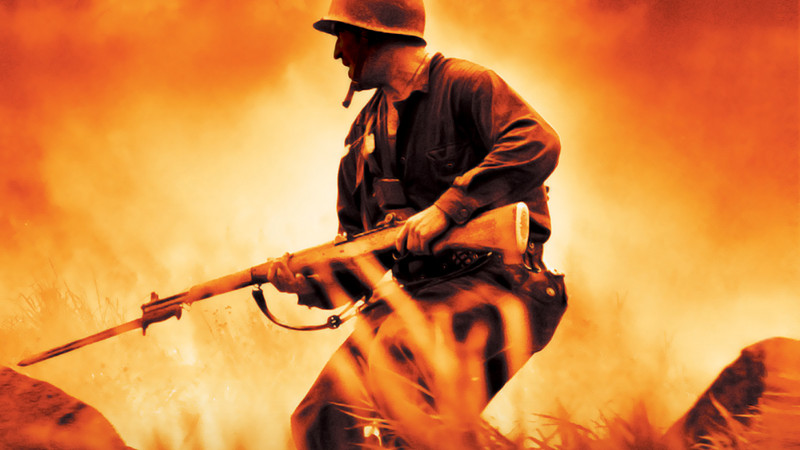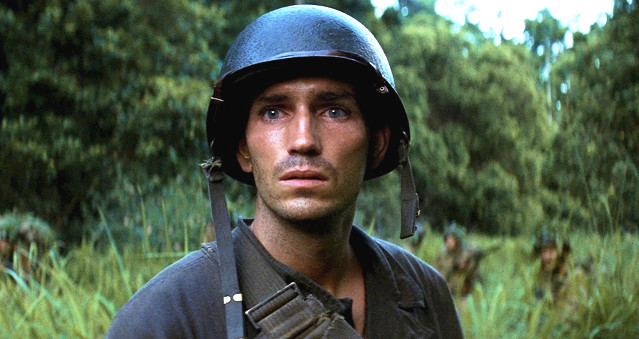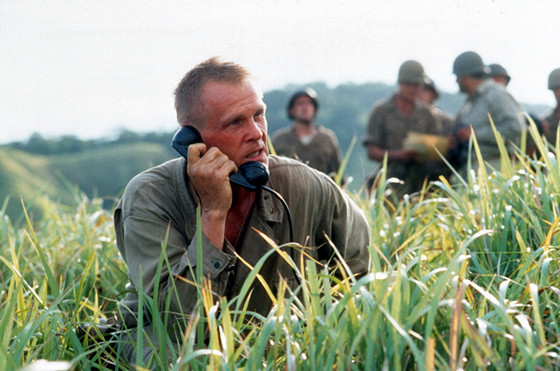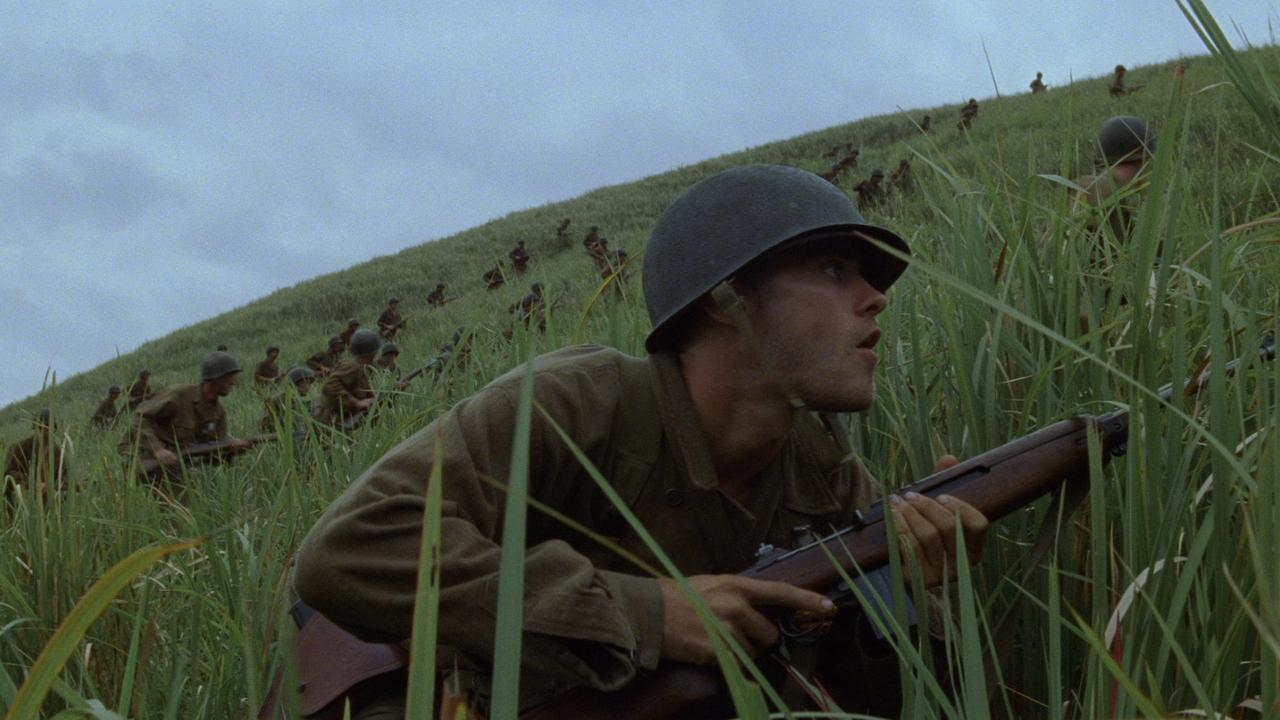
Life, let alone show business, is full of strange stories. Surely one of the stranger ones, certainly within the post-studio Hollywood era, would be that of Terrence Malick. Born in Waco, Texas in 1943, the son of an oilman, he is a Harvard-educated Rhodes scholar who double majored in philosophy and journalism and ended up teaching at MIT.
Well then, how did a nice, knowledgeable boy such as that get into the movies? Well, in a backhanded way for a short answer. He transferred to a teaching post in California and soon wrote the script for 1972’s “Pocket Money”, a film that displays none of the cerebral qualities which mark Malick’s own films (much more on that later).
It wasn’t a hit but, being New Hollywood, a neophyte with some experience could end up directing at least one studio picture. That one film, like “Pocket Money”, was made for Warner Brothers and it was 1973’s “Badlands”.
Badlands was based on the Charles Starkweather-Caril Ann Fugate Midwest murder spree of the 1950s, though it didn’t use real names and was given the fictional treatment. It was also far from a cheap exploitation film of a sensational event.
It was measured, distanced (thanks in no small part to voiceover narration carrying the plot, a favorite Malick device), scenic with a keen eye for nature (another Malick motive), and an overriding philosophy which might well be called a God’s-eye view of things (also more later). Many critics hailed it as a great debut (Pauline Kael notably excepted), but the public didn’t come.
Cut to 1978 and several years work on the film which became “Days of Heaven”, one of the great visual treats the cinema has given the world. This story of lust, greed, betrayal and crime, set against the wheat fields of midland US in the early 20th century, also had some great notices (Kael again excepted) but just about no box office. (It also won the only Oscar and nomination given to either film, for cinematographer Vilmos Zsigmond). It was even more austere than its predecessor and even less popular.
It was after “Days” (which had a painful delivery on the road to release) that things began to get seriously strange. It’s not that big a surprise that someone who creates such serene films from material which could be so pulpy would be one to seek his own counsel and keep his significant thoughts to himself. The film industry has had some reclusive people in its time but Malick is the cake taker.
Even as a novice director-screenwriter he wouldn’t grant interviews, never wanted pictures taken of himself (practices observed to this day), would not mingle with cast and crew and, well generally just doesn’t want to talk about it at all. That was in the best of times but, after Days, he vanished….for twenty years!
What did he do during that time? Anyone who knows could probably get a pretty penny selling the story to serious film journals, but no one who would talk knows and Malick certainly won’t tell. There were rumors, never confirmed, that he contributed to a script or two but, officially, nothing. Then, out of the clear blue, came the news that a new Malick film was on the way. It was to be a World War II film entitled “The Thin Red Line”.
Quite oddly, in view of the fact that Malick had made but two films some two decades earlier which did little business, won very few awards or nominations, and received mixed to good reviews, Hollywood’s then-elite beat quite a path to the door of the studio (20th Century Fox) to be in the return vehicle of a legendary filmmaker (it should be noted that people in the entertainment biz know as little about the history of their business as the world at large knows of history, period).
Well, all the attention helped create a magnum opus for Malick and the film was indeed his film done his way. It made more money than any other of his films and, with the exception of the subsequent “The Tree of Life” (2011), it is the most honored of his works.
Though he has not forsaken his reclusive ways, Malick has been making up for lost time since his return (to the point where some snarky critics are suggesting he go into hiding again to improve subsequently indifferently received films). However, his comeback still commands attention. The following list will attempt to explain why.
1. A Great Starting Point

To those who actually read books and/or know of 20th century US literature, the title “The Thin Red Line” was already familiar as a well-remembered 1962 novel by James Jones. Jones had burst on the scene (and is still somewhat best remembered) for his prize-winning 1951 novel “From Here to Eternity” (source of the famed 1953 film).
As with a number of US writers of his generation, he had fought in World War II (and was a soldier far longer than the years of that conflict) and it marked him permanently. Most of his writings dealt with the interaction of military and civilians in war and/or peace, depending on the work. He was most at home, though, in exploring the military mind in times of war and it’s generally agreed that those works are his best.
In the years since its publication, “The Thin Red Line”, which got good initial reviews, has gained in stature to the point where many consider it Jones’ masterwork. Though its story of battle in the Pacific during World War II is very literal, it is also the story of the war as it exists within the minds of the individual combatants. It is, therefore, a very deep and philosophical work, one quite logical for the first (and, to date, only) literary adaptation Malick has attempted. T
he novel was first adapted to the screen in a forgotten version in 1964, directed by the forgettable Andrew Marton, which, at 99 minutes of running time, left a lot, a very lot, of the large book on the editing table. At nearly three hours, the 1998 version gets much more on the screen (though Malick’s screenplay was far longer and he apparently filmed much of it, editing the story after shooting).
Also, the earlier version left very much of the author’s philosophy out as well, something that can’t be said of the later version. In fact, one might well say that author and screen artist were quite like-minded, thus getting the project off to a great start.
2. A Measured Sense of Existence

One element that is both the glory and challenge (for many viewers, at any rate) of this is the sense of emotional distance with which Malick invests all of his films. Much of the time, this takes the form of voiceover narration, which replaces most of the bulk of the film’s dialog and also creates a remove between the characters and dramatic action and the viewer.
This, frankly, drives some viewers crazy, since it drains away most of, if not all of, the immediacy of the film’s action. However, this is what Malick does want. As noted, many of the stories he tells could be trashy, sleazy, trite or banal if handled in a usual, traditional way.
However, plot is about the last thing on his mind. Malick is interested in behavior and the thought that goes into it and how larger issues such as environment (more on that later) impact the individual. One old adage is that there is no surer way to know the inside than to stay resolutely on the outside. Malick is one of cinema’s great practitioners of this philosophy. His narrations are told in limited imperfect voice and he doesn’t use exposition to any great degree at all.
“The Thin Red Line” certainly adheres to this. This story is about one of the most visceral of experiences and yet the arm’s length the film holds it at somehow makes it feel tragic on a great and noble scale, and most poignant overall. For those expecting something along the lines of, say, “Saving Private Ryan” (a close contemporary of this film), this may be frustrating, but for those who can go with it, the experience is immeasurably deeper.
3. Nature is All Around Us

Outside of wildlife documentarians, there can be no filmmaker more in awe of nature than Terrence Malick. In every film he has made, the role of man in the context of nature and how the natural world surrounding the characters are part of the makeup of those characters is a key component.
“Badlands” would not have been the same film without the barren, hostile terrain containing the depraved ‘lovers’. “Days of Heaven” couldn’t exist without the majestic and forbiddingly spare wheat fields against which the tragic story plays out.
In “The Thin Red Line”, the setting is the supposedly uncivilized islands of the South Pacific. The setting is breathtakingly beautiful but also harshly challenging to all human and animal life, giving respect but no mercy. A war created by non-indigenous peoples is being fought here, but Malick underlines the point that war is man’s business.
Nature does not observe or care about war. The main character of this cinematic version (Jim Caviezel) has run from the war, being more wisely enraptured by the grandness of the nature around him. The fact that he will not be allowed to enjoy his sojourn and melding with that nature will become one of the key tragedies of the film.